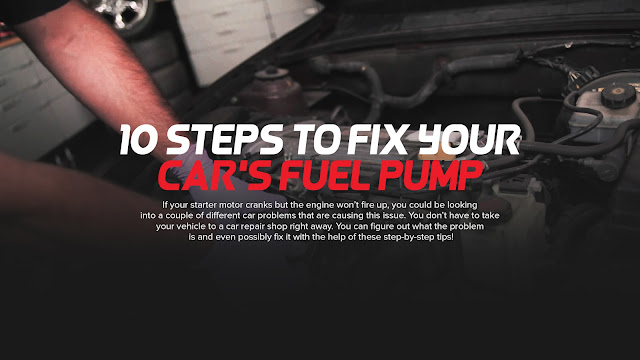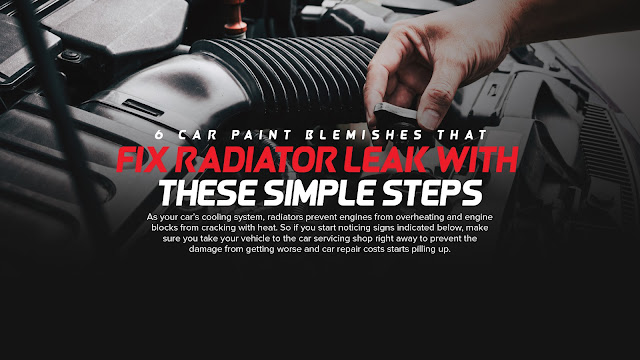If your starter motor cranks but the engine won’t fire up, you could be looking into a couple of different car problems that are causing this issue. You don’t have to take your vehicle to a car repair shop right away. You can figure out what the problem is and even possibly fix it with the help of these step-by-step tips!
1. Check Your Fuel
Before you freak out and assume the worst, relax and check your fuel first. A lot of the time, the problem is the wrong fuel in your tank which is a mistake that happens every now and then at the gasoline station. If that’s not the case, you should check if your fuel gauge is functioning or if you still have fuel inside the tank too.
2. Make Sure You Have Spark
Find the fuel system fuse and take it out of its socket. It should be in a fuse box together with the fuel pump relay. Pull out a spark plug wire, and jam a screwdriver with an insulated grip where the spark plug attaches. Hold the other end of the screwdriver close to but not touching a grounded metal surface. Have an assistant or a companion crank the starter. An electrical spark will jump in the air gap between the ground and the screwdriver attached to the plug wire. If there is none, check the whole ignition system from the plugs, plug wires, ignition coil, and cam position sensor. If the vehicle is equipped with neutral safety and/or anti-theft systems, make sure they are deactivated.
3. Inspect Your Starter Motor
A broken starter is another common reason your car won’t start. A starter is an electrical motor that is connected to the battery. Its role is to set the engine in motion when you turn the ignition switch on. Once the engine starts and is in motion, the starter's job is complete. If the starter goes bad, the engine will not crank properly or may not crank at all when you turn the ignition key on. If you hear a clicking noise when you try to start your vehicle, a broken or weakened starter could be the reason why your car isn't starting.
4. Scan For Diagnostic Fault Codes
If what you’re dealing with here is anything related to fuel pump errors, ECU faults, cam/crank position sensor, or fuel pressure problems, your check engine light is probably glowing. That’s when you whip out your OBD scanner, as it’s a very accurate tool that can diagnose those problems for you.
OBD scanners that are high quality will provide you enough information that you need. It can give you live data from the ECU, fuel pressure readings, voltage supplied to the pump, coil-on-plug individual voltages and more that you’ll find valuable. What’s even great is that these data can be viewed from your laptop or smartphone screen which is very convenient.
5. Check For Compression
Not everyone has a scanner on hand, but you can still make certain inspections without that. If your ignition system is still working, open the valve cover and check the timing belt or chain. If it’s intact and everything looks okay, the crank should be turning and timing cylinder compressions as it should. You can then conclude here that the lack of fuel is the problem.
6. Check Your Fuel System
Do you always experience your car losing power when you try to accelerate? Or you’re having trouble starting your car altogether? Sounds like your fuel system is malfunctioning which is keeping your engine from drawing more fuel to accelerate. Fuel system may malfunction because of a clogged injector, leaking fuel line, or gummed-up filter or kaput fuel pump.
You should be able to hear the fuel pump in the tank humming and the fuel pump relay clicking when you turn the ignition. If you’re not hearing any of those, check the fuel system fuse which you removed earlier when checking for spark. You’ll know you’re looking at a fuel pump problem if you see an intact fuse and a clicking relay. Usually the pump and the tank can be accessed from under the car or under the rear passenger seats. So go under there and see if there are any corrosion in the electrical connectors. While you’re at it, might as well check for continuity and voltage supply to the pump using a multimeter.
7. Confirm If You Have Fuel Pressure
Make sure to wear safety goggles and gloves since you’ll be handling fuel at this point onward. It’s also best to collect spilled fuel in a sealed container. Tap a pressure gauge into the fuel supply hose close to the injectors before you turn the ignition and crank the starter. If the pressure rises to about 20-30 pounds per square inch (psi) then it’s all good. But if it doesn’t then it’s an indication of clogged fuel filter. You should then take it out and replace it with a new one.
8. Pull Out The Pump
If you want to bench test your fuel pump even further or probably thinking of replacing it, you can pull it out from the tank. After that, connect the electrical connectors to a power source to confirm pump operation. Just make sure you do this carefully because you can cause a spark and ignite gasoline fumes while doing this. Avoid that by working in a well-ventilated area and moving cautiously.
9. Replace The Pump
Since it’s relatively cheap to replace fuel pumps and it has no serviceable parts, it’s best if you just replace it. Just ensure that you’re purchasing an original equipment (OE) manufactured pump or you can also upgrade to an aftermarket one so long that the replacements you’re getting is compatible with your car. If you’re unsure of the fuel quality or if you find significant loose rust, drain out all the gasoline and clean the tank.
10. Reset Fault Codes
After reassembly, refill the tank with fresh fuel and start the car. With the scanner, you can erase the stored error codes to turn off the check engine light.



